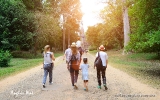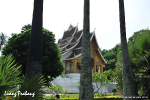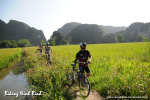Are you dreaming of an exotic adventure that combines rich history, stunning landscapes, and vibrant culture? Look no further than Cambodia, a jewel in Southeast Asia that beckons travelers with its enchanting allure. From the majestic Angkor Wat, a UNESCO World Heritage site, to the pristine beaches of Sihanoukville, Cambodia offers a tapestry of experiences that will captivate your heart and soul. In this guide, we'll unveil the best places to visit in Cambodia, taking you on a journey through its hidden gems, bustling cities, and serene countryside. Whether you're an avid history buff, a nature lover, or simply seeking a unique travel experience, Cambodia has something extraordinary waiting for you. Join us as we explore the top destinations that make Cambodia a must-visit on any traveler's bucket list.
Angkor Wat: Cambodia’s Must-See Attractions
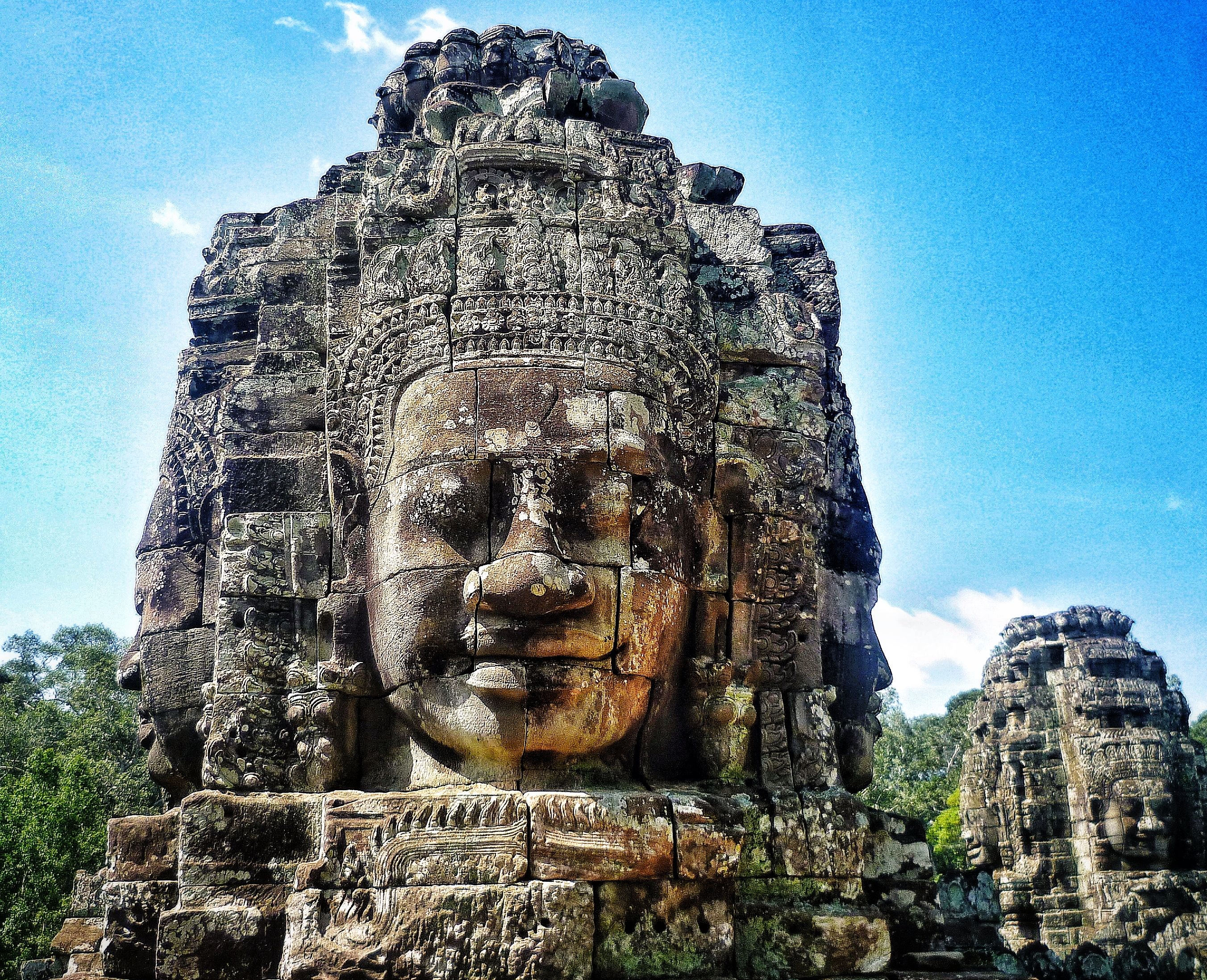
Angkor Wat, built in the early 12th century by King Suryavarman II, is the largest religious monument in the world. Initially dedicated to the Hindu god Vishnu, it later transformed into a Buddhist temple. This architectural marvel is a symbol of Cambodia, featuring on its national flag, and represents the peak of Khmer architecture. Its grandeur and intricate bas-reliefs attract millions of tourists annually, making it a UNESCO World Heritage site.
Main Attractions: Key Temples
- The Central Temple Complex:
- The central tower, rising 65 meters, symbolizes Mount Meru, the center of the universe in Hindu and Buddhist cosmology.
- The extensive bas-reliefs depict scenes from Hindu epics such as the Ramayana and Mahabharata.
- Ta Prohm:
- Famous for the giant roots of ancient trees enveloping the temple ruins, Ta Prohm offers a unique jungle atmosphere.
- It was used as a filming location for the movie "Tomb Raider".
- Bayon Temple:
- Located in the Angkor Thom complex, Bayon is renowned for its multitude of serene and massive stone faces on the many towers that jut out from the upper terrace and cluster around its central peak.
- It represents a blend of mythological and historical significance with its carvings and sculptures.
- Banteay Srei:
- Known as the “Citadel of Women,” Banteay Srei is praised for the intricacy of its carvings in pink sandstone.
- The detailed artwork here is some of the best-preserved in Cambodia.
Best Time to Visit: Recommended Seasons and Times of Day
- Seasons:
- The ideal time to visit Angkor Wat is during the dry season from November to March when the weather is cooler and less humid.
- The wet season (May to October) offers lush green landscapes, but heavy rains can make travel difficult.
- Times of Day:
- Sunrise: The most iconic time to visit, capturing the temple silhouetted against the rising sun is a photographer's dream.
- Early Morning: Right after sunrise, fewer crowds and cooler temperatures make for a more comfortable visit.
- Late Afternoon: Provides a different light perspective and fewer crowds compared to the midday rush..
Entry Fees, Guided Tours, What to Bring
- Entry Fees:
- A one-day pass costs around $37, a three-day pass is $62, and a seven-day pass is $72.
- Tickets can be purchased at the main entrance on the road to Angkor Wat.
- Guided Tours:
- Hiring a local guide is recommended to gain deeper insights into the history and significance of the temples.
- Many tours include transportation and can be arranged through hotels or travel agencies.
- What to Bring:
- Comfortable Clothing: Light, breathable clothing is ideal, but ensure your shoulders and knees are covered out of respect for the sacred site.
- Water and Snacks: Stay hydrated and carry some light snacks as exploring the vast complex can be tiring.
- Camera and Sun Protection: Don’t forget your camera for capturing stunning photos, and wear a hat and sunscreen to protect against the sun.
Exploring Angkor Wat is a journey through history and architecture, offering a glimpse into the grandeur of the ancient Khmer Empire. Whether you’re fascinated by its historical significance or its sheer beauty, Angkor Wat is undoubtedly a must-see destination in Cambodia.
Phnom Penh: The Vibrant Capital
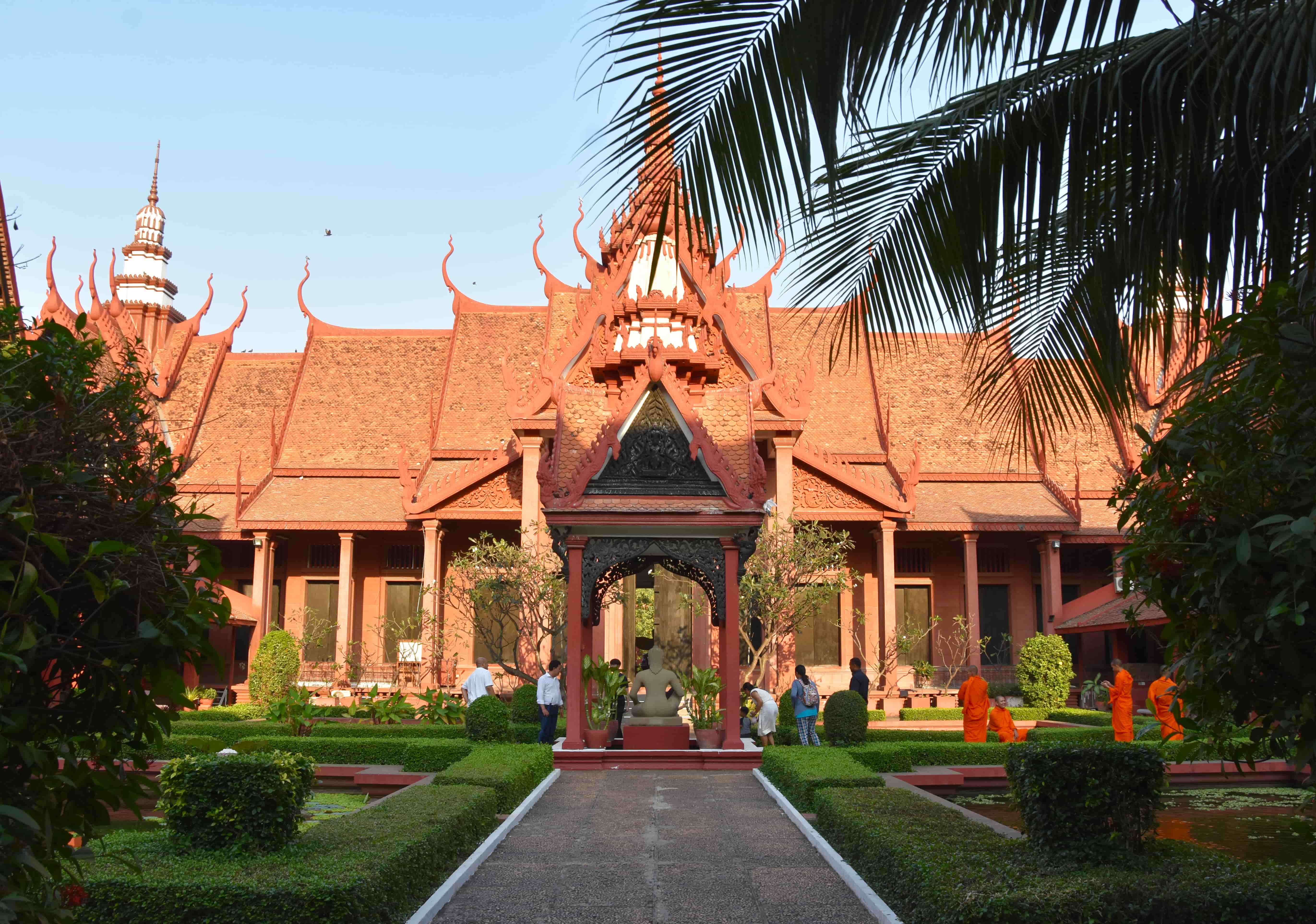
Phnom Penh, the bustling capital of Cambodia, is a city that beautifully blends its historical past with modern urban energy. Once known as the “Pearl of Asia,” Phnom Penh has overcome the tumultuous years of civil war to emerge as a vibrant and dynamic city. Established in 1434, it became the capital due to its strategic location at the confluence of the Mekong and Tonle Sap rivers. The city is renowned for its historical architecture, lively markets, and rich cultural heritage.
Main Attractions: Key Sights to Visit
- Royal Palace and Silver Pagoda:
- The Royal Palace is a complex of buildings which serves as the royal residence of the King of Cambodia. The Silver Pagoda, located within the palace grounds, houses many national treasures including gold and jeweled Buddha statues.
- Tuol Sleng Genocide Museum:
- A former high school turned into a prison by the Khmer Rouge, Tuol Sleng is now a museum documenting the atrocities committed during the Cambodian genocide. It is a sobering site that provides deep insight into the country’s recent history.
- Choeung Ek Genocidal Center:
- Known as the Killing Fields, this site is located just outside the city and serves as a memorial to the victims of the Khmer Rouge regime. The center includes a stupa filled with the skulls of victims, providing a poignant reminder of Cambodia’s past.
- National Museum of Cambodia:
- This museum houses the world's largest collection of Khmer art, including sculpture, ceramics, and ethnographic objects. It offers a comprehensive overview of Cambodia’s rich artistic heritage.
- Phsar Thmei (Central Market):
- Housed in a striking Art Deco building, the Central Market is a bustling marketplace where visitors can buy everything from fresh produce to jewelry and souvenirs. It’s a great place to experience the local culture and find unique items.
Best Time to Visit Phnom Penh
- Seasons:
- The best time to visit Phnom Penh is during the cool, dry season from November to February. During this period, temperatures are more comfortable, and there is less humidity, making it ideal for sightseeing.
- The hot season (March to May) can be extremely warm, while the rainy season (June to October) often sees heavy downpours, though the city is less crowded and more lush during this time.
- Times of Day:
- Morning: Visiting major attractions like the Royal Palace and museums early in the morning can help avoid the crowds and the midday heat.
- Evening: The riverside area, especially Sisowath Quay, comes alive in the evening with bustling night markets, lively bars, and restaurants. It's a great time to enjoy a leisurely stroll and soak in the local ambiance.
Entry Fees, Guided Tours, What to Bring
- Entry Fees:
- The Royal Palace and Silver Pagoda: Around $10.
- Tuol Sleng Genocide Museum: Approximately $5.
- Choeung Ek Genocidal Center: Around $6.
- Guided Tours:
- Hiring a local guide can provide deeper insights into the history and significance of Phnom Penh’s attractions. Many tours are available that include transportation and can be customized based on interests.
- What to Bring:
- Comfortable Clothing: Light, breathable fabrics are ideal due to the hot climate. Ensure respectful attire for visiting temples and religious sites (shoulders and knees covered).
- Water and Snacks: Staying hydrated is crucial, especially when walking around in the heat.
- Camera and Sun Protection: A camera for capturing the city’s beauty and a hat, sunscreen, and sunglasses for sun protection.
Phnom Penh offers a unique blend of historical depth and modern vibrancy. Exploring this city provides a profound understanding of Cambodia’s past and present, making it a must-visit destination for any traveler to Southeast Asia.
Siem Reap: Gateway to Angkor
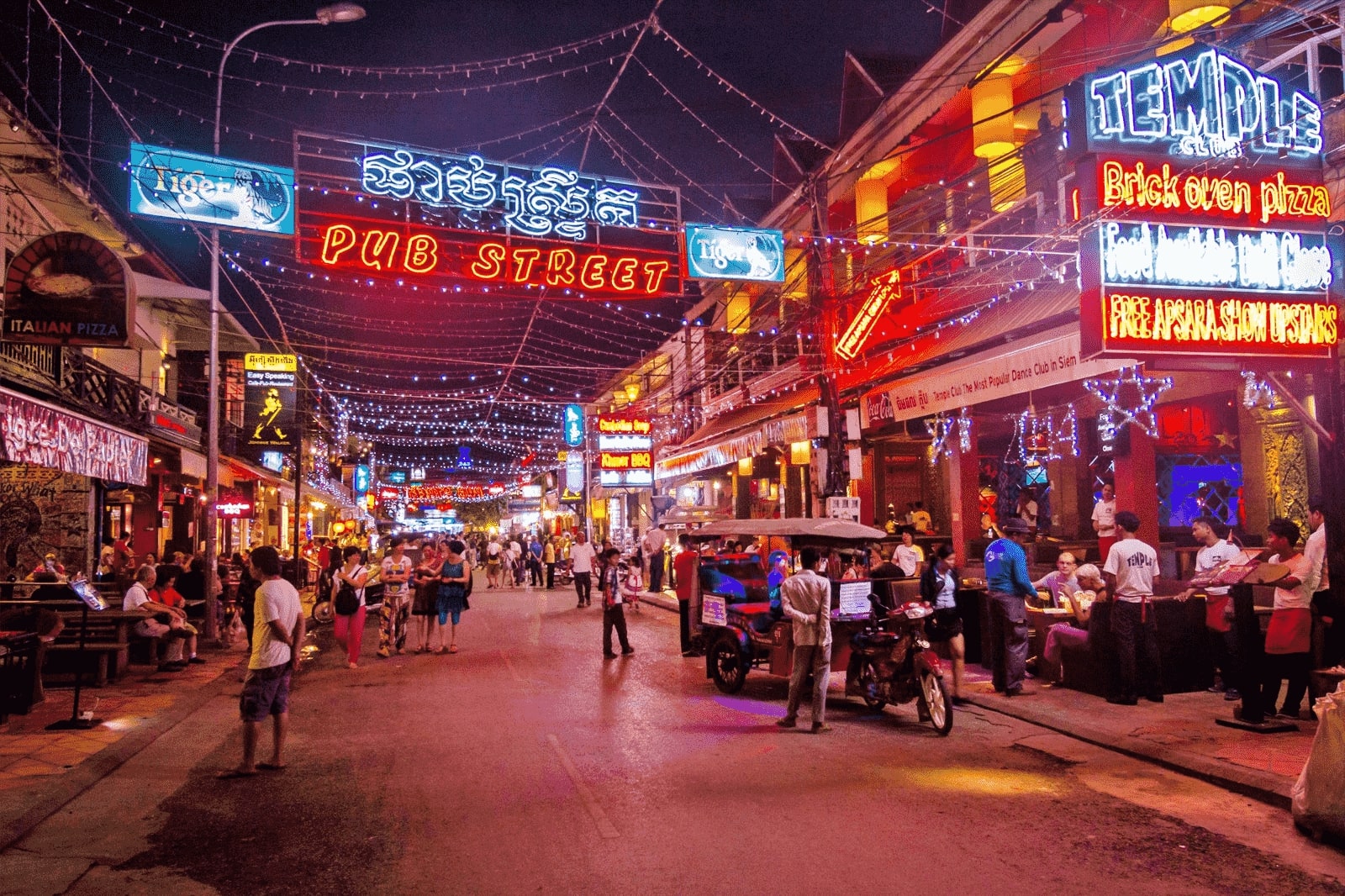
Siem Reap is a vibrant city in northwest Cambodia that serves as the gateway to the world-renowned Angkor Archaeological Park. The city itself is a blend of ancient charm and modern amenities, offering a unique combination of cultural experiences and comforts for travelers. Siem Reap’s proximity to Angkor Wat, the largest religious monument in the world, makes it a crucial hub for tourists. Over the past two decades, it has transformed from a quiet town into a bustling tourism center, while still retaining its rich cultural heritage.
Main Attractions
- Angkor Wat:
- The centerpiece of the Angkor Archaeological Park, Angkor Wat is a massive temple complex built in the early 12th century. Its intricate carvings and grand scale make it a must-visit for any traveler.
- Angkor Thom and Bayon Temple:
- Angkor Thom is a large walled city that was the last capital of the Khmer Empire. The Bayon Temple within Angkor Thom is famous for its serene stone faces and intricate bas-reliefs depicting historical events and everyday life.
- Ta Prohm:
- Known for the giant tree roots that envelop its ruins, Ta Prohm offers a picturesque and somewhat eerie glimpse into the power of nature reclaiming man-made structures. This temple was also a filming location for the movie "Tomb Raider".
- Tonle Sap Lake and Floating Villages:
- Tonle Sap is the largest freshwater lake in Southeast Asia and a critical resource for Cambodia. Visitors can explore the floating villages and observe the unique way of life of the communities that live on the lake.
- Siem Reap Night Market:
- A bustling market that offers a variety of local goods, souvenirs, and street food. It’s a great place to experience the local culture and try traditional Cambodian dishes.
Best Time to Visit: Recommended Seasons and Times of Day
- Seasons:
- The best time to visit Siem Reap is during the dry season, from November to April, when the weather is cooler and less humid. This is also the peak tourist season, so expect more crowds.
- The wet season (May to October) offers lush green landscapes and fewer tourists, but some areas may be more challenging to navigate due to heavy rains.
- Times of Day:
- Early Morning: Visiting temples like Angkor Wat at sunrise provides breathtaking views and cooler temperatures, making the experience more comfortable and serene.
- Late Afternoon: The temples are less crowded, and the lighting is excellent for photography. Evening visits to the night market and Pub Street are also enjoyable due to the vibrant nightlife.
Tips: Entry Fees, Guided Tours, What to Bring
- Entry Fees:
- Angkor Archaeological Park requires an entry pass, which costs around $37 for a one-day pass, $62 for a three-day pass, and $72 for a seven-day pass.
- Guided Tours:
- Hiring a local guide is highly recommended for a richer experience, as they can provide in-depth historical context and navigate efficiently through the vast temple complex. Many tours also include transportation and can be booked through hotels or travel agencies.
- What to Bring:
- Comfortable Clothing: Wear light, breathable clothing suitable for the hot climate. Respectful attire is required for temple visits (shoulders and knees covered).
- Water and Snacks: Carry plenty of water to stay hydrated and light snacks to keep your energy up while exploring.
- Camera and Sun Protection: A camera for capturing the beautiful temples and landscapes, and a hat, sunscreen, and sunglasses for sun protection are essential.
Siem Reap offers a unique blend of cultural heritage and modern comforts, making it an essential stop for anyone visiting Cambodia. Whether exploring the ancient temples of Angkor or enjoying the vibrant city life, Siem Reap promises an unforgettable experience.
Sihanoukville: Beach Paradise
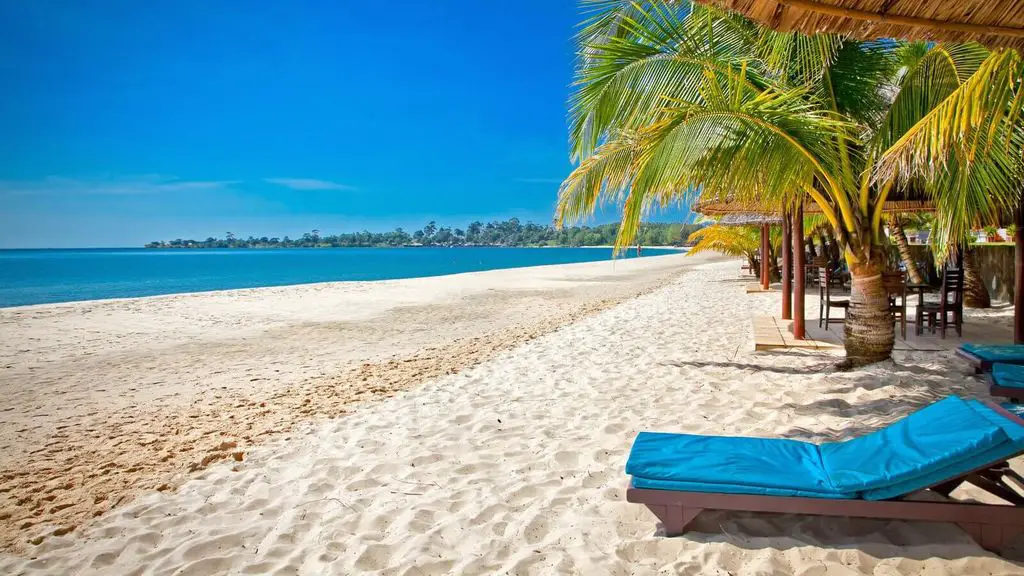
Hey there, beach lovers! If you’re dreaming of white sandy shores and turquoise waters, then Sihanoukville should be on your radar. Located on the southern coast of Cambodia, this beach paradise has something for everyone, from laid-back sunbathers to adrenaline-seeking adventurers.
Sihanoukville, also known as Kompong Som, is Cambodia’s premier seaside destination. Over the years, it has evolved from a sleepy beach town into a vibrant coastal city. Despite its rapid development, it still retains much of its natural charm, making it the perfect escape from the hustle and bustle of city life.
Top Beaches to Explore in Sihanoukville
- Otres Beach:
- Otres Beach is split into two sections: Otres 1 and Otres 2. Both offer a more relaxed vibe compared to the main beaches. Imagine chilled-out bars, rustic bungalows, and stunning sunsets. It’s the ideal spot for unwinding with a cocktail in hand.
- Serendipity Beach:
- This is the most popular beach in Sihanoukville, buzzing with activity. Lined with restaurants, bars, and hotels, Serendipity Beach is perfect if you enjoy a lively atmosphere and want to be in the heart of the action.
- Sokha Beach:
- If you’re looking for something a bit more upscale, head to Sokha Beach. This private stretch of sand belongs to the Sokha Beach Resort, but you can access it for a small fee. It’s well-maintained and less crowded, offering a more luxurious experience.
- Independence Beach:
- Named after the nearby Independence Hotel, this beach offers a peaceful retreat with clear waters and fewer tourists. It’s a great spot for a quiet day by the sea.
The best time to soak up the sun in Sihanoukville is from November to February. During these months, the weather is dry and pleasant, with temperatures hovering around a comfortable 25-30°C (77-86°F). Avoid the monsoon season from May to October when heavy rains can put a damper on your beach plans.
Activities and Tips
- Island Hopping: Don’t miss out on exploring the nearby islands like Koh Rong and Koh Rong Samloem. These islands are just a boat ride away and offer pristine beaches, crystal-clear waters, and fantastic snorkeling spots.
- Water Sports: Sihanoukville is a haven for water sports enthusiasts. Try your hand at jet-skiing, windsurfing, or scuba diving. Many local operators offer equipment rental and lessons for beginners.
- Nightlife: After a day in the sun, the town comes alive with its vibrant nightlife. Serendipity Beach Road is the place to be for bars and nightclubs that keep the party going until the early hours.
- What to Bring: Pack light, breathable clothing for the hot weather. Don’t forget your swimsuit, sunscreen, and a hat to protect yourself from the sun. A reusable water bottle is also handy to stay hydrated throughout the day.
Sihanoukville is more than just a beach destination; it’s a slice of paradise that caters to all kinds of travelers. Whether you’re looking to relax on the beach, explore underwater worlds, or dance the night away, this coastal gem has got you covered. So, pack your bags and get ready to create some unforgettable memories in Sihanoukville!
This seaside retreat is waiting to welcome you with open arms. Dive into the beauty of Cambodia’s coastline and let Sihanoukville’s charm sweep you off your feet.
Kampot and Kep: Coastal Charms
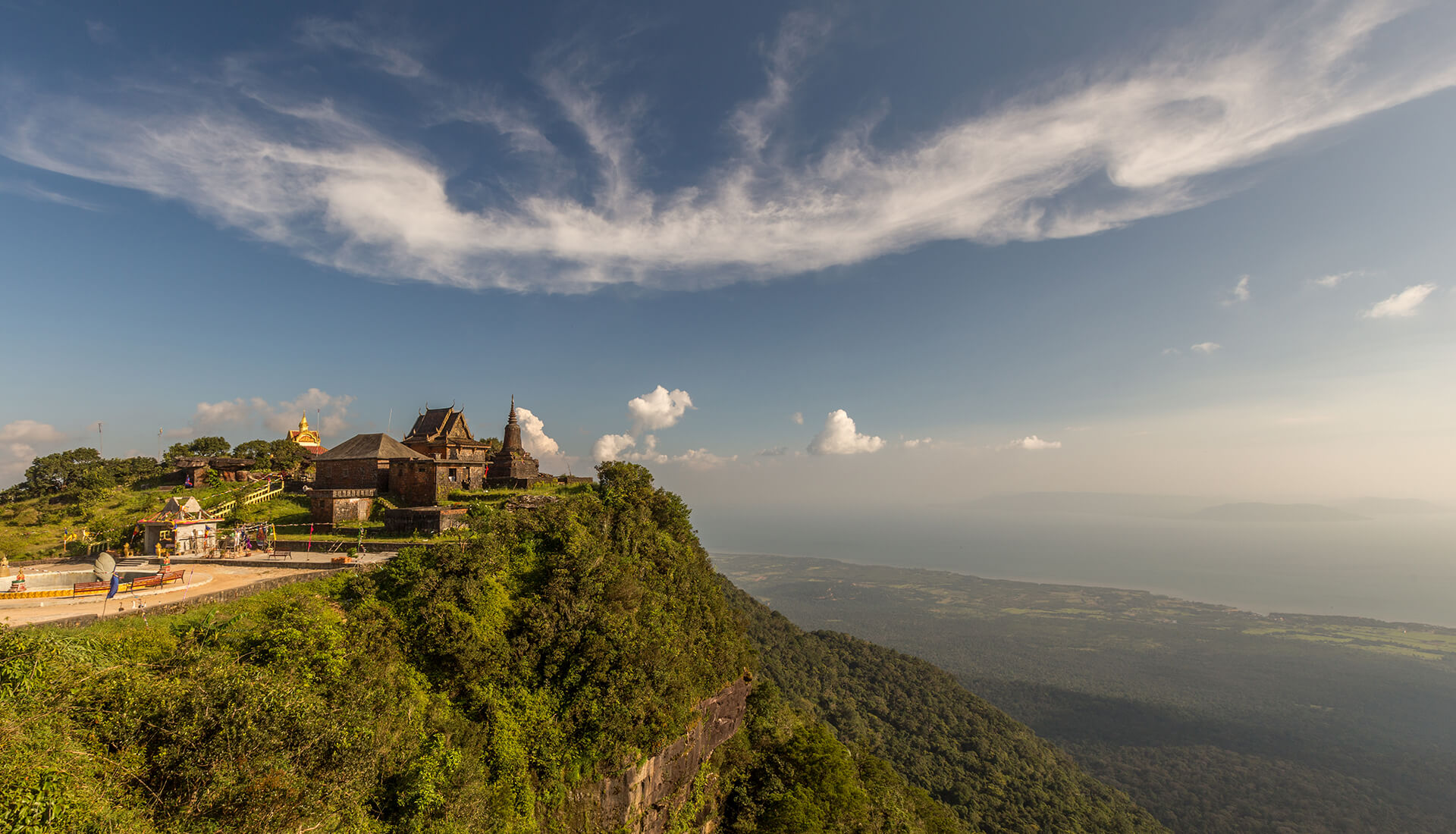
Discovering Kampot
Kampot, a charming riverside town in southern Cambodia, is renowned for its relaxed atmosphere, colonial architecture, and pepper plantations. This quaint town offers a perfect blend of natural beauty and cultural heritage, making it a must-visit destination for those looking to experience the authentic Cambodian countryside.
Key Attractions in Kampot
- Bokor National Park:
- Home to the hauntingly beautiful Bokor Hill Station, an old French colonial resort, this park offers stunning views, cool temperatures, and diverse wildlife. The highlight is the eerie, mist-shrouded ruins of the old casino and hotel.
- Kampot Pepper Plantations:
- Famous worldwide, Kampot pepper is a gastronomic delight. Visiting the pepper farms gives you insight into the cultivation process and an opportunity to taste this prized spice right from the source.
- Kampot River:
- A scenic river that’s perfect for a lazy boat ride or a kayak trip. The sunset views from the river are simply breathtaking, making it a favorite spot for both locals and tourists.
- Colonial Architecture:
- Wander through the town to admire the well-preserved French colonial buildings, which give Kampot a nostalgic charm and a peek into its historical past.
Exploring Kep
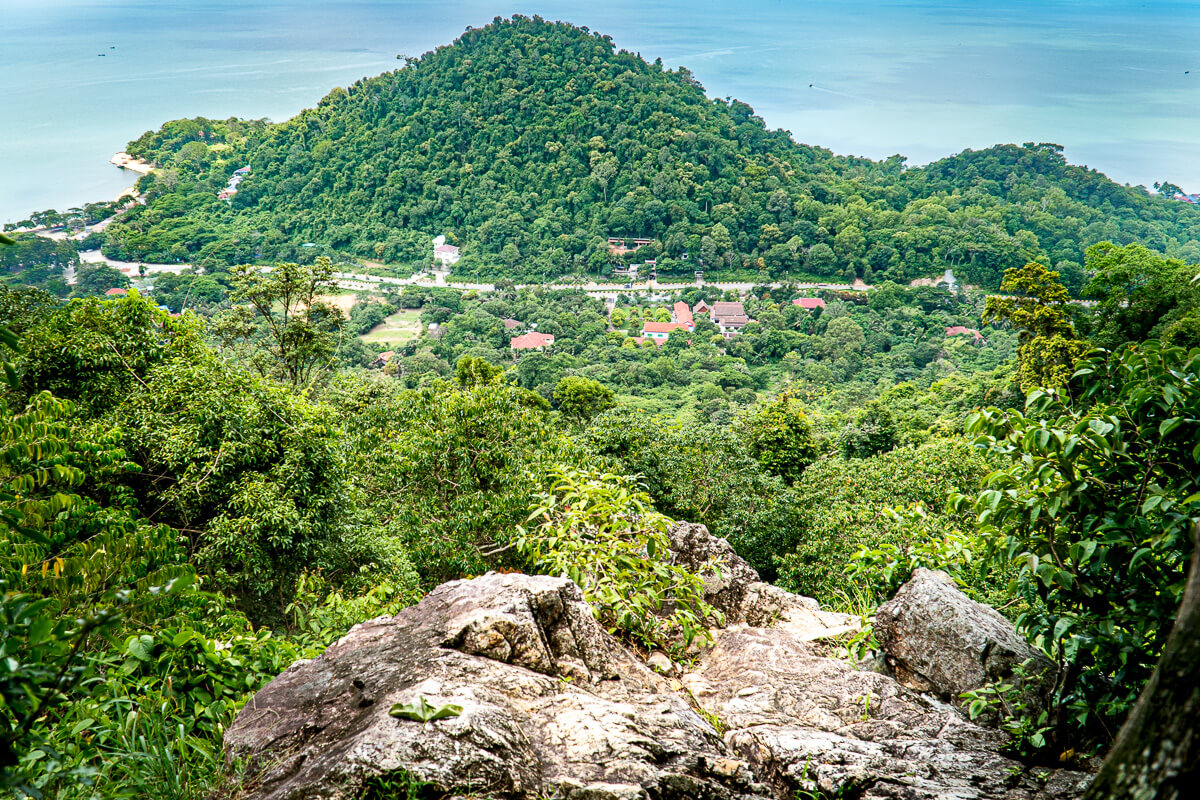
Just a short drive from Kampot, the seaside town of Kep is known for its beautiful beaches, fresh seafood, and serene landscapes. Originally a French colonial resort town, Kep retains much of its old-world charm while offering a peaceful retreat by the sea.
Highlights of Kep
- Kep Beach:
- A small but picturesque beach, Kep Beach is perfect for relaxing and swimming. The calm waters and clean sands make it an ideal spot for families and beach lovers.
- Kep National Park:
- This park offers a network of well-marked trails suitable for hiking and exploring. The trails provide stunning views of the coastline, forests, and wildlife, making it a great spot for nature enthusiasts.
- Crab Market:
- A visit to Kep wouldn’t be complete without stopping by the famous Crab Market. Here, you can enjoy fresh, delicious seafood, especially the renowned Kampot pepper crab, right by the sea.
- Rabbit Island (Koh Tonsay):
- A short boat trip from Kep, Rabbit Island is a tranquil getaway with beautiful beaches, clear waters, and rustic bungalows. It’s the perfect place to unwind and escape the hustle and bustle.
The ideal time to visit Kampot and Kep is during the dry season, from November to April. The weather is cooler and drier, making it perfect for outdoor activities and exploration. The rainy season, from May to October, brings lush green landscapes but can also result in travel disruptions due to heavy rains.
Tips for Travelers
- Getting Around: Renting a bicycle or scooter is a popular way to explore Kampot and Kep at your own pace. Tuk-tuks and taxis are also available for longer trips.
- Accommodation: Both towns offer a range of accommodations from budget guesthouses to more upscale boutique hotels. Staying in a riverside bungalow in Kampot or a beachfront guesthouse in Kep can enhance your experience.
- What to Bring: Light, breathable clothing is recommended due to the warm climate. Don’t forget sunscreen, a hat, and insect repellent, especially if you’re planning to spend a lot of time outdoors.
Kampot and Kep offer a delightful mix of natural beauty, cultural heritage, and culinary delights. Whether you’re exploring the pepper plantations, hiking in the national parks, or savoring fresh seafood by the beach, these coastal towns promise an unforgettable Cambodian adventure. So, pack your bags and get ready to immerse yourself in the serene charms of Kampot and Kep!
Battambang: Cultural Heartland
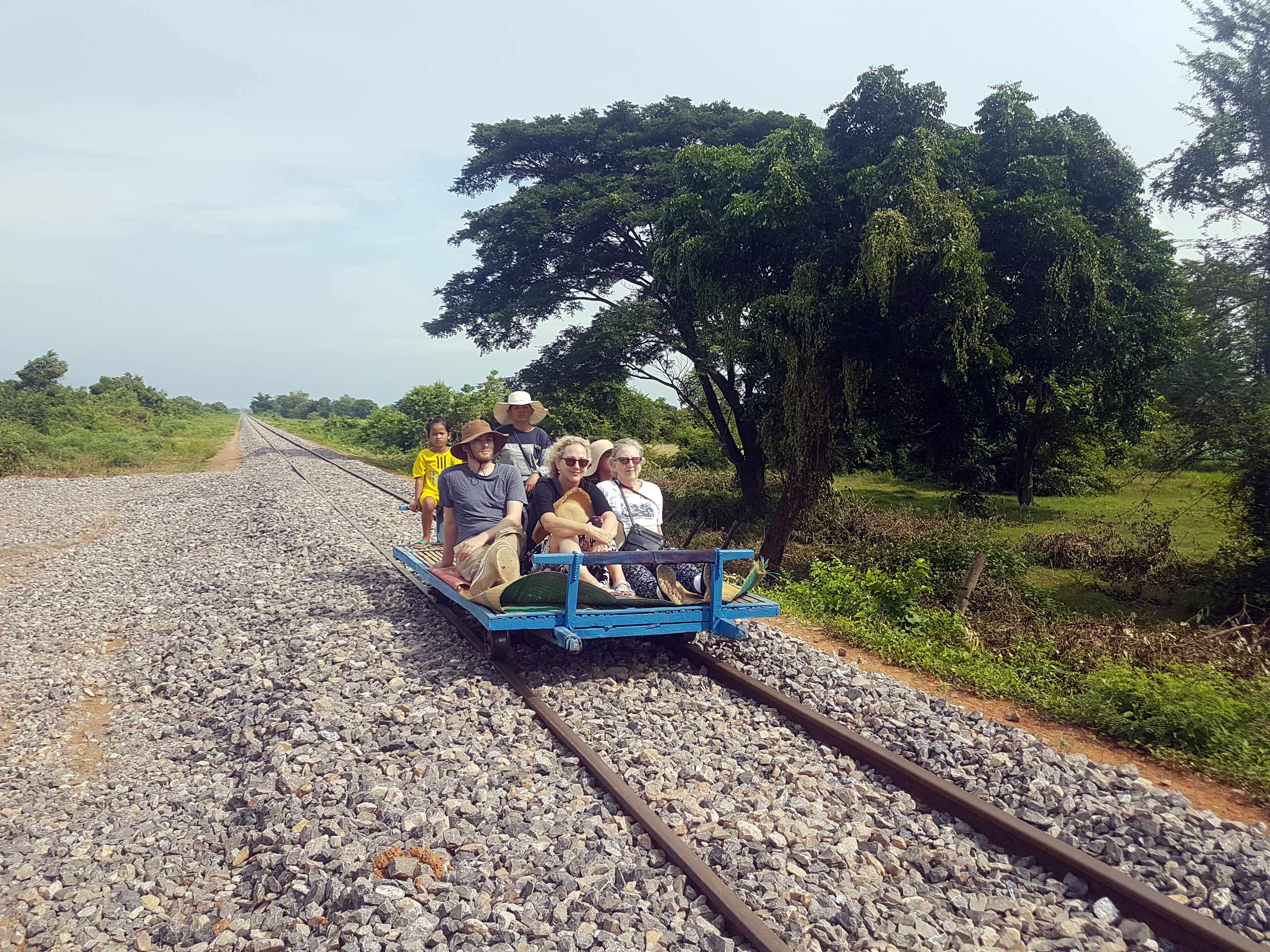
Nestled in the northwest of Cambodia, Battambang is often considered the cultural heartland of the country. Renowned for its well-preserved colonial architecture, vibrant arts scene, and rich agricultural landscapes, Battambang offers a unique glimpse into Cambodia’s heritage. It's a city where tradition meets creativity, making it a captivating destination for travelers seeking an authentic cultural experience.
Battambang is a city that beautifully blends its historical significance with contemporary artistic endeavors. Its tranquil riverside setting, combined with bustling markets, ancient temples, and dynamic art spaces, provides a diverse array of attractions for visitors. The slower pace of life here compared to other major cities like Phnom Penh or Siem Reap allows for a more relaxed exploration of its many charms.
Key Attractions in Battambang
- Phnom Sampeau:
- This hilltop complex offers stunning views and significant historical sites, including a pagoda, caves used as killing fields during the Khmer Rouge era, and the famous bat cave where thousands of bats emerge at dusk.
- Wat Banan Temple:
- Often compared to a mini-Angkor Wat, Wat Banan is an ancient temple that sits atop a hill, providing panoramic views of the surrounding countryside. The climb up the 358 steps is well worth the effort.
- Bamboo Train (Norry):
- A unique and fun experience, the Bamboo Train is a makeshift rail vehicle that used to run on the old railway tracks. It offers a bumpy but charming ride through the countryside, showcasing the ingenuity of local transportation solutions.
- Battambang Museum:
- This small museum houses a collection of artifacts from the Angkor period, offering insights into the region's rich history and archaeological significance. It’s a great place to learn more about the local heritage.
- Art Galleries and Workshops:
- Battambang is known for its thriving arts scene, with numerous galleries and workshops showcasing the work of local artists. Venues like Romcheik 5 Art Space and Lotus Gallery highlight contemporary Cambodian art and provide a platform for emerging talents.
Cultural Experiences
- Circus Performances by Phare Ponleu Selpak:
- Phare Ponleu Selpak, meaning "The Brightness of the Arts," is a renowned Cambodian circus school based in Battambang. The performances blend traditional and modern circus skills with powerful storytelling, often reflecting Cambodia’s social issues and history. It's an inspiring experience that showcases the resilience and creativity of Cambodian youth.
- Cooking Classes:
- Immerse yourself in Cambodian cuisine by taking a cooking class. Local establishments offer classes where you can learn to prepare traditional dishes using fresh, locally sourced ingredients. It’s a delicious way to connect with the local culture.
Best Time to Visit
The best time to visit Battambang is during the dry season, from November to April. The weather is cooler and drier, ideal for exploring the outdoor attractions and enjoying the various activities the city has to offer. The wet season, from May to October, brings lush green landscapes but also heavier rains that can affect travel plans.
Tips for Travelers
- Getting Around: Battambang is easily navigable by bicycle or tuk-tuk. Renting a bicycle is a great way to explore the city at your own pace, while tuk-tuks are convenient for longer distances and day trips to outlying attractions.
- Accommodation: From budget guesthouses to boutique hotels, Battambang offers a range of accommodations to suit different preferences. Staying in a riverside hotel can provide beautiful views and easy access to the city’s main attractions.
- What to Bring: Light, breathable clothing is recommended due to the warm climate. Don’t forget sunscreen, a hat, and comfortable walking shoes, especially if you plan on hiking to attractions like Phnom Sampeau and Wat Banan..
Battambang stands out as a cultural and artistic hub in Cambodia, offering a rich tapestry of experiences that blend history, art, and natural beauty. Whether you're exploring ancient temples, enjoying vibrant local art, or experiencing the unique bamboo train ride, Battambang promises a memorable and enriching journey. So, pack your bags and set out to discover the cultural heartland of Cambodia, where every corner has a story to tell and a beauty to unveil.
Koh Rong: Island Getaway
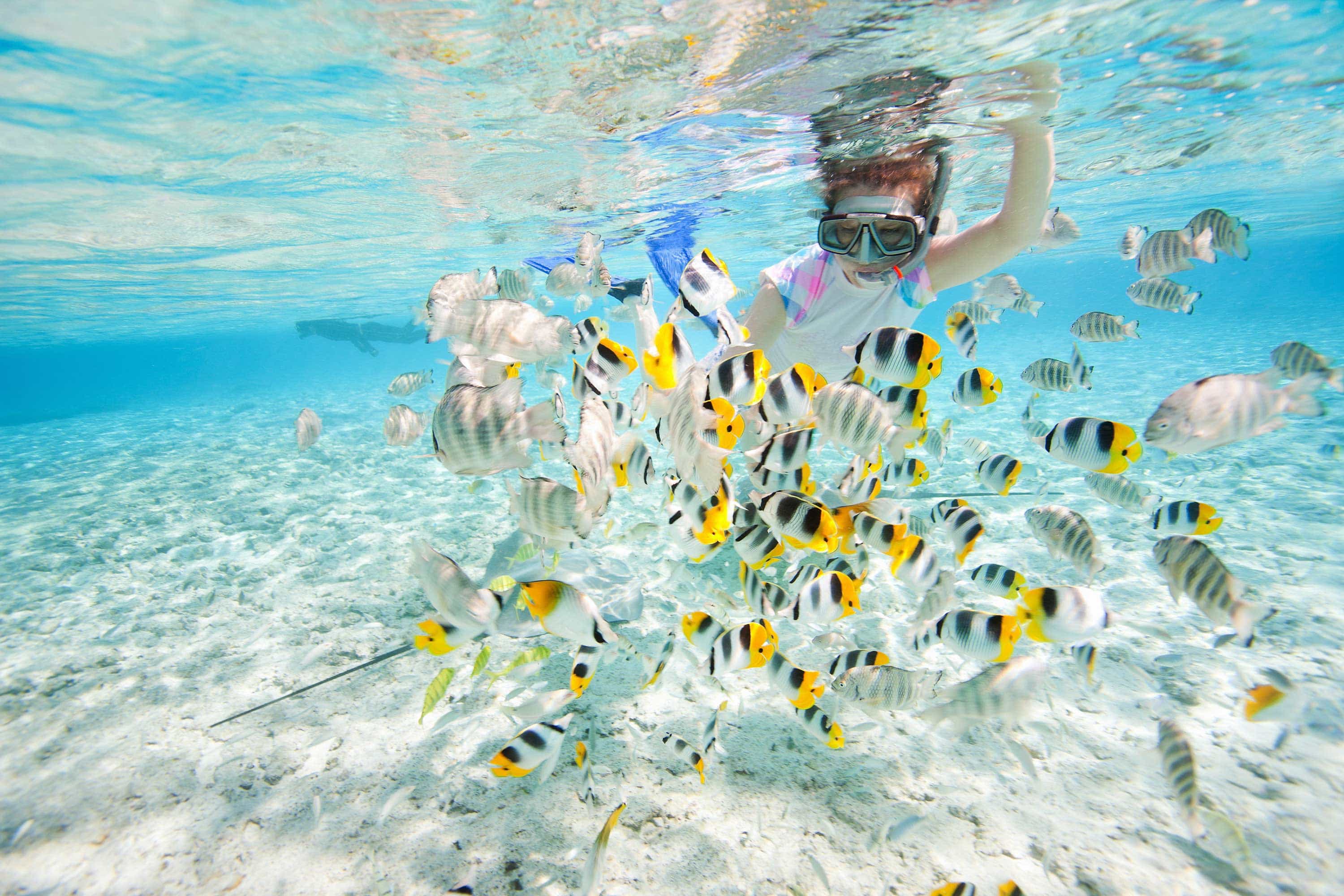
Koh Rong, located off the coast of Cambodia, is the perfect island getaway for travelers seeking pristine beaches, crystal-clear waters, and a laid-back atmosphere. Known for its stunning natural beauty and vibrant nightlife, Koh Rong has quickly become a favorite destination for both adventure seekers and those looking to unwind in a tropical paradise.
Koh Rong offers a diverse range of experiences, from adventurous activities like diving and zip-lining to relaxing on some of the most beautiful beaches in Southeast Asia. The island is less developed than other popular destinations, which means you can still find untouched spots and enjoy the serene environment.
Highlights of Koh Rong
- Beaches:
- Long Beach: Often hailed as one of the most beautiful beaches in the world, Long Beach stretches for seven kilometers with powdery white sand and turquoise waters. It’s perfect for sunbathing, swimming, and watching stunning sunsets.
- Koh Toch Beach: This is the main tourist hub on the island, offering a variety of accommodations, restaurants, and bars. It’s a lively spot with a vibrant nightlife scene, ideal for those looking to socialize and enjoy the beach party vibe.
- Snorkeling and Diving:
- Koh Rong is surrounded by vibrant coral reefs teeming with marine life, making it a fantastic destination for snorkeling and diving. There are several dive shops on the island that offer courses and guided tours to explore the underwater world.
- Adventure Activities:
- Zip-lining: For thrill-seekers, High Point Adventure Park offers an exciting zip-lining experience through the jungle canopy. It’s a great way to get an adrenaline rush and enjoy panoramic views of the island.
- Kayaking and Paddleboarding: Exploring the coastline by kayak or paddleboard is a popular activity, allowing you to discover hidden coves and beaches at your own pace.
- Bioluminescent Plankton:
- One of Koh Rong’s most magical experiences is swimming with bioluminescent plankton. These tiny organisms light up the water with a blue glow at night, creating a mesmerizing and unforgettable experience.
Best Time to Visit
The best time to visit Koh Rong is during the dry season, from November to May. The weather is warm and sunny, perfect for beach activities and exploring the island. The wet season, from June to October, brings heavy rains and rough seas, which can limit outdoor activities and affect travel plans.
Tips for Travelers
- Getting There: Koh Rong is accessible by ferry from Sihanoukville. The journey takes about 45 minutes to 2 hours, depending on the type of ferry. Make sure to check the schedule and book tickets in advance, especially during peak season.
- Accommodation: The island offers a range of accommodations from budget bungalows to luxury resorts. Staying near Koh Toch Beach provides easy access to amenities and nightlife, while other areas like Long Beach offer a more secluded experience.
- What to Bring: Light, breathable clothing is recommended for the tropical climate. Don’t forget sunscreen, insect repellent, and a reusable water bottle. A waterproof bag can be useful for protecting your belongings during water activities.
Koh Rong is a slice of paradise that caters to all types of travelers. Whether you’re looking to dive into underwater adventures, relax on stunning beaches, or dance the night away under the stars, this island has something for everyone. So, pack your bags and get ready to experience the enchanting beauty of Koh Rong. Your island adventure awaits!
Kratie: Home of the Irrawaddy Dolphins
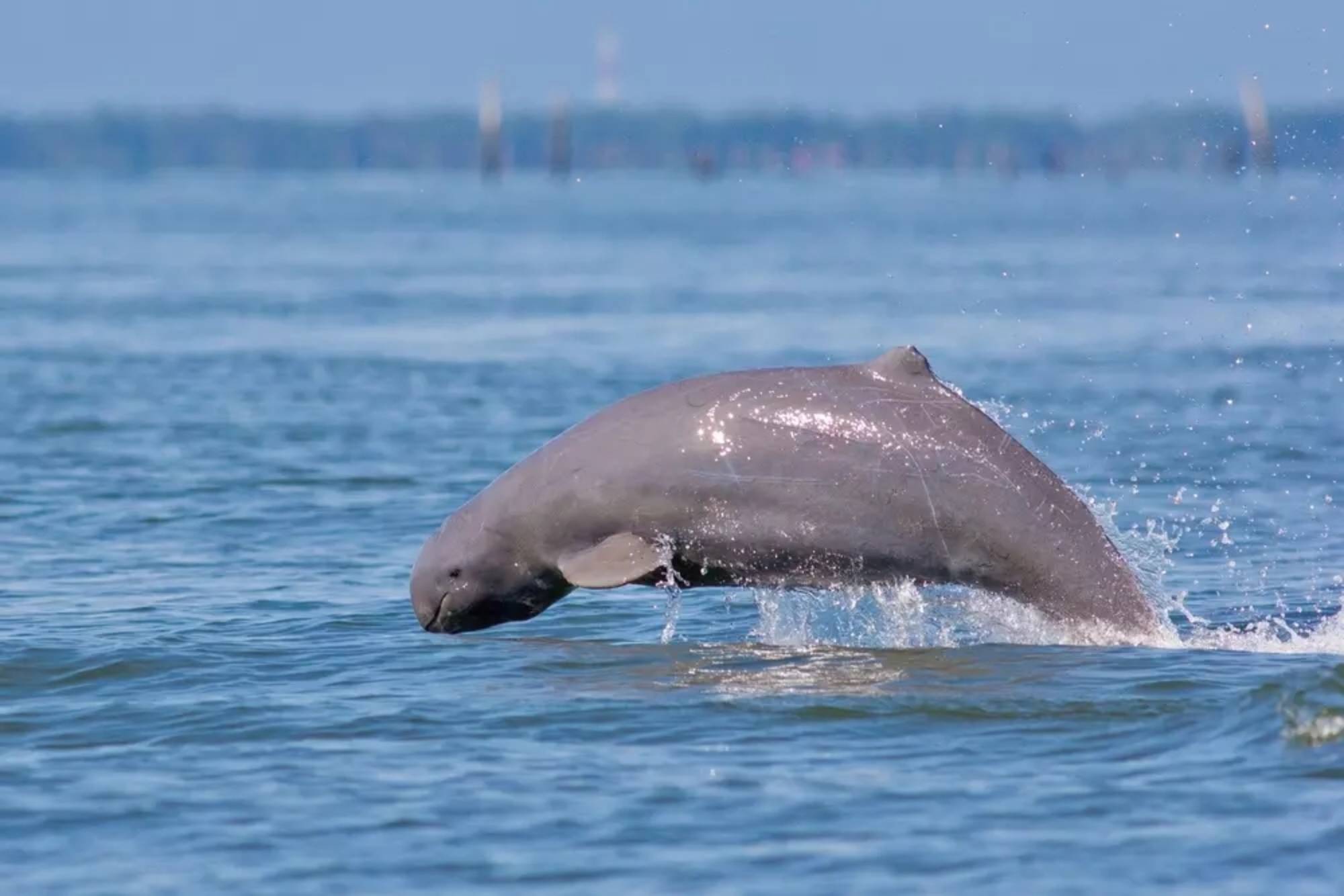
Nestled along the banks of the mighty Mekong River, Kratie is a charming town in northeastern Cambodia. It offers a unique blend of natural beauty, cultural heritage, and tranquil riverside ambiance. Kratie is best known as the gateway to the Irrawaddy dolphins, making it a must-visit destination for wildlife enthusiasts and those looking to experience Cambodia’s lesser-known treasures.
Kratie provides an escape from the hustle and bustle of more tourist-heavy destinations. Its laid-back atmosphere, friendly locals, and stunning river views create a perfect setting for relaxation and exploration. The town itself is dotted with colonial-era buildings, giving it a nostalgic charm. However, the true highlight is the rare Irrawaddy dolphins, which can be seen in their natural habitat along the Mekong River.
Spotting the Irrawaddy Dolphins
The Irrawaddy dolphins are an endangered species, and Kratie is one of the few places in the world where you can see them in the wild. These gentle creatures, with their distinctive rounded foreheads and shy nature, inhabit a stretch of the Mekong River near Kampi village, about 15 kilometers north of Kratie.
Best Time to See the Dolphins
- Dry Season (November to May): The best time to spot the dolphins is during the dry season when the river levels are lower. This makes the dolphins easier to see as they surface more frequently in the shallower waters.
- Morning and Late Afternoon: Dolphins are most active during the cooler parts of the day, so early morning or late afternoon boat trips are recommended for the best viewing opportunities.
How to Get There
- Boat Tours: Local operators offer boat tours from Kampi village, taking you to the prime dolphin-watching spots. These tours are typically around 1-2 hours long, providing ample time to observe the dolphins and enjoy the serene river scenery.
Other Attractions in Kratie
- Koh Trong Island:
- A short ferry ride from Kratie town, Koh Trong is a peaceful island on the Mekong River. Rent a bicycle and explore the island’s rural landscapes, traditional stilt houses, and orchards. It’s a great way to experience local life and enjoy the natural beauty of the area.
- Phnom Sombok:
- This small hilltop pagoda offers panoramic views of the surrounding countryside and the Mekong River. The climb to the top is lined with colorful statues and provides a tranquil spot for reflection and photography.
- Wat Roka Kandal:
- One of the oldest pagodas in Kratie, Wat Roka Kandal dates back to the early 19th century. Its traditional Khmer architecture and serene setting make it a worthwhile visit.
Tips for Travelers
- Getting Around: Kratie is a small town, and most attractions are easily accessible by bicycle or tuk-tuk. Renting a bicycle is a popular and eco-friendly way to explore the area.
- Accommodation: There are several guesthouses and small hotels in Kratie that cater to various budgets. Staying in a riverside guesthouse can enhance your experience with beautiful views of the Mekong River.
- What to Bring: Light, comfortable clothing is essential due to the warm climate. Don’t forget sunscreen, a hat, and insect repellent, especially if you’re planning to spend a lot of time outdoors. Binoculars can also enhance your dolphin-watching experience.
Kratie is a hidden gem that offers a unique glimpse into Cambodia’s natural and cultural heritage. From the enchanting Irrawaddy dolphins to the tranquil charm of Koh Trong Island, Kratie provides a refreshing escape from the typical tourist trail. So, pack your bags and set off to discover the serene beauty of this riverside town. The Irrawaddy dolphins and the warm hospitality of Kratie await you!
As of 2024, the endangered Irrawaddy dolphins that once frequented the waters of Kratie have become increasingly elusive, with sightings now being a matter of sheer luck rather than a guaranteed experience for visitors.
Mekong River Cruises: Scenic Journeys
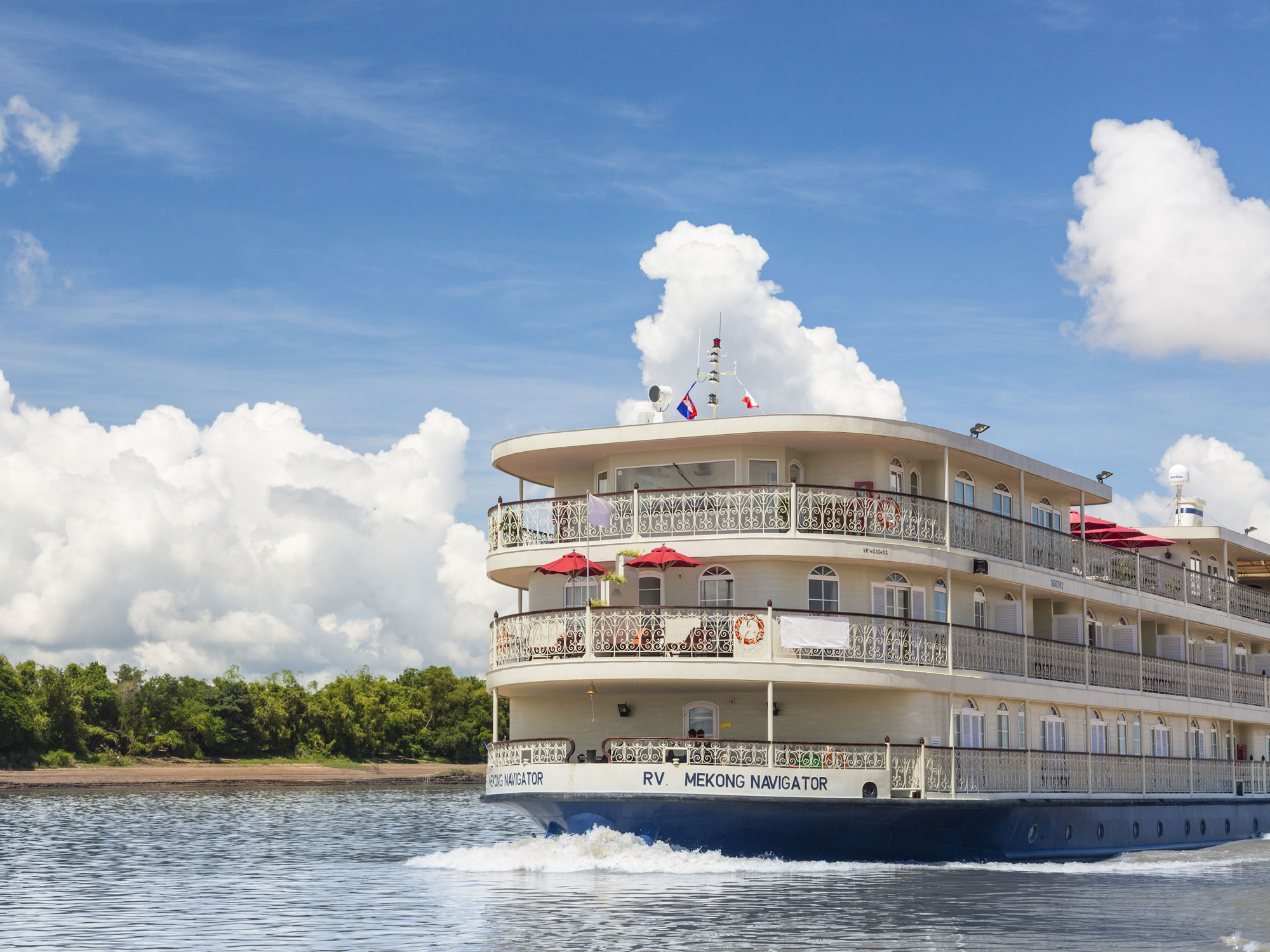
If you're looking to experience the heart of Southeast Asia in a unique and leisurely way, then a Mekong River cruise is just the ticket. These cruises offer a blend of scenic beauty, cultural immersion, and serene relaxation as you glide along one of the world's great rivers. Let’s dive into what makes a Mekong River cruise such a memorable journey.
The Mekong River is the lifeblood of Southeast Asia, flowing through six countries and providing sustenance and transport for millions of people. A river cruise allows you to explore this region in a way that's both relaxing and intimate. You'll have the chance to see remote villages, bustling cities, and lush landscapes that are often inaccessible by road.
Highlights of the Journey
- Floating Markets:
- One of the unique experiences of a Mekong River cruise is visiting floating markets. Here, local vendors sell everything from fresh produce to handmade crafts from their boats. It’s a vibrant and colorful scene that offers a glimpse into the daily life along the river.
- Historical Sites:
- The Mekong is lined with historical treasures, including ancient temples and colonial-era architecture. In Vietnam, you might visit the famous Cu Chi Tunnels, while in Cambodia, the stunning temples of Angkor Wat are a must-see..
- Local Culture:
- Cruises often include stops at traditional villages where you can interact with locals, learn about their way of life, and witness traditional crafts being made. This cultural immersion is a highlight for many travelers.
- Natural Beauty:
- The river itself is stunning, with lush green banks, vibrant birdlife, and picturesque sunsets. The tranquil pace of the cruise allows you to fully appreciate the natural beauty of the Mekong Delta.
The best time for a Mekong River cruise is during the dry season, from November to April. The weather is more predictable, with cooler temperatures and less humidity, making it ideal for sightseeing and outdoor activities. The wet season (May to October) brings lush landscapes and fewer tourists, but also the risk of heavy rains and high water levels that can affect travel plans
Tips for a Great Mekong Cruise
- Choosing the Right Cruise: There are various types of cruises available, from luxury liners to more budget-friendly options. Consider what level of comfort and amenities you desire, as well as the itinerary offered.
- Packing Essentials: Light, breathable clothing is key due to the warm climate. Don’t forget sunscreen, a hat, and insect repellent. Comfortable shoes are a must for shore excursions.
- Health and Safety: Ensure you have necessary vaccinations and take precautions against mosquito-borne illnesses. It's also wise to bring a small medical kit for minor ailments.
A Mekong River cruise is more than just a journey; it’s an immersive experience that connects you with the rich culture, history, and natural beauty of Southeast Asia. Whether you’re drifting past floating markets, exploring ancient temples, or simply soaking up the scenery from the deck, this is a travel adventure that stays with you long after you’ve returned home. So, set sail on the Mekong and let the river guide you through one of the most enchanting regions of the world.
Ready to embark on your Mekong adventure? Pack your bags and prepare for an unforgettable journey through the heart of Southeast Asia!
Tonle Sap Lake: Floating Villages and Wildlife
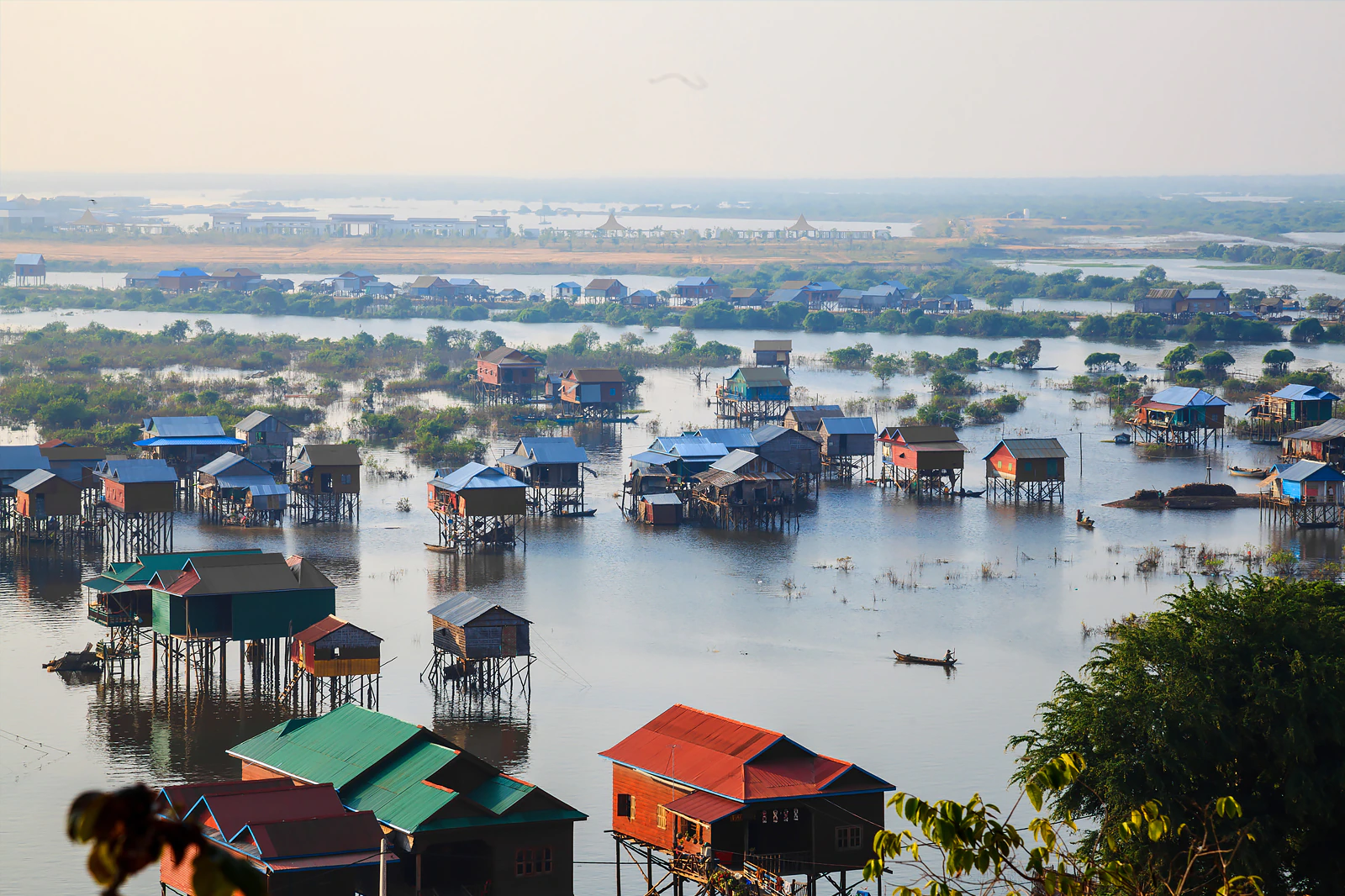
Get ready to be mesmerized by Tonle Sap, Southeast Asia's largest freshwater lake! This unique ecosystem undergoes a dramatic transformation throughout the year. During the high water season (June to October), the lake swells to a staggering 15,000 square kilometers, flooding forests and creating a magical landscape of floating villages.
Imagine bobbing houses on stilts, schools and shops accessible only by boat – that's the captivating reality of life on Tonle Sap. A guided tour is your best bet to navigate the labyrinthine waterways and experience this vibrant, self-contained community. Many tours depart from Siem Reap, Angkor Wat's charming gateway city.
But Tonle Sap isn't just about human ingenuity. The high water season also coincides with a birdwatching bonanza. Flocks of migratory birds, including pelicans, storks, and kites, descend upon the lake, making it a haven for bird enthusiasts.
While the lake's charm persists year-round, the dry season (November to May) presents a different picture. The water recedes significantly, and the floating villages transform into fixed structures on the exposed lakebed. While boat tours are still available, the majestic vastness of the lake is less evident.
To truly appreciate the lake's grandeur, plan your visit during the high water season. For the best viewing spots and an immersive experience, opting for a guided tour is highly recommended. So, pack your sense of adventure, grab your binoculars (optional, but recommended for birdwatchers!), and get ready to discover the wonders of Tonle Sap Lake!
Cardamom Mountains: Trekking and Adventure
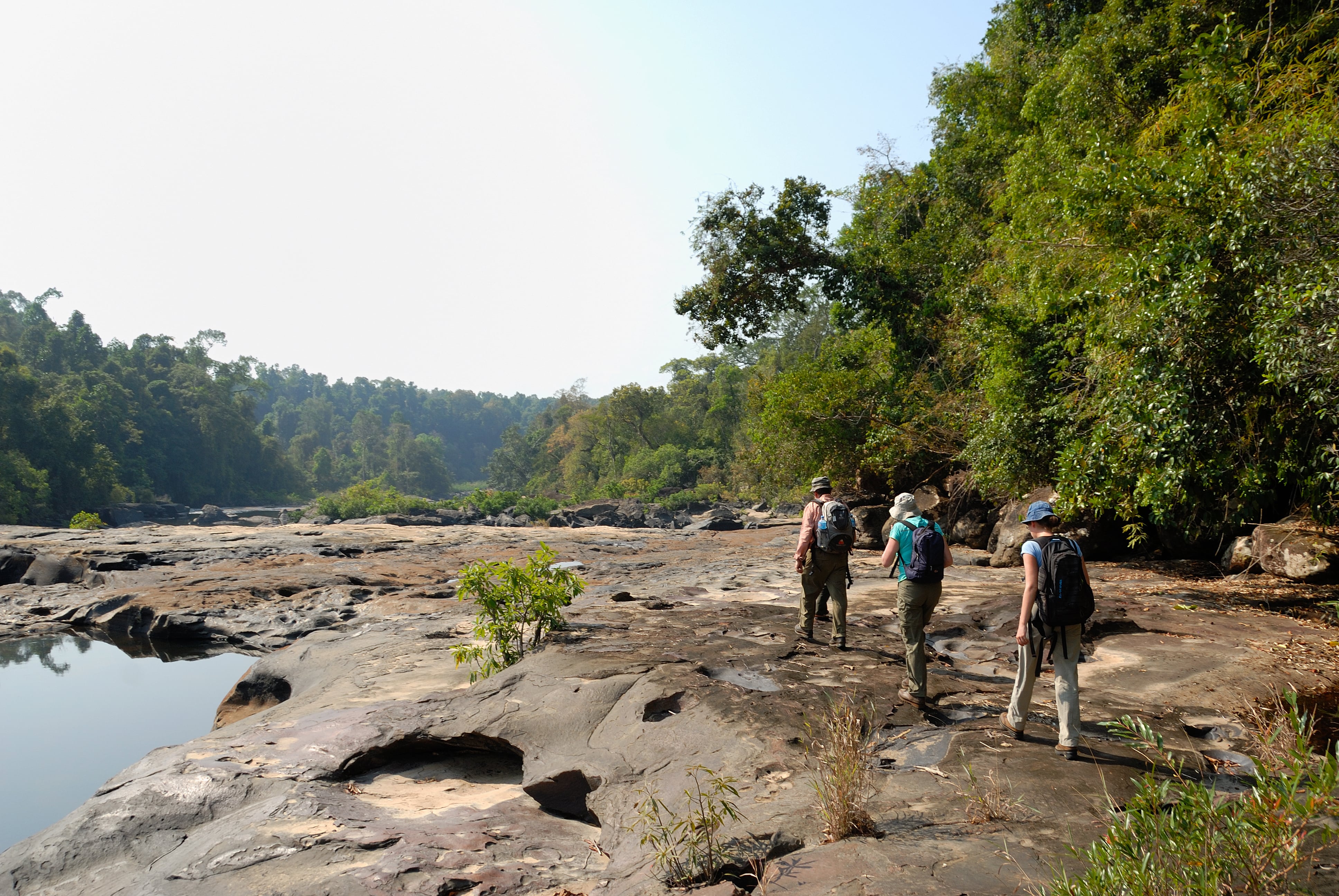
Craving an adventure that goes beyond the Angkor temples? Dive into the emerald embrace of Cambodia's Cardamom Mountains, a biodiversity hotspot teeming with life and untouched beauty. Here, dense rainforests cloak mountains that rise from the earth, offering a playground for intrepid explorers.
The Cardamoms are crisscrossed with trekking routes, catering to all experience levels. Hike through verdant valleys, following hidden streams that lead to cascading waterfalls. Breathe in the crisp jungle air, sunlight dappling through the towering trees. Keep your eyes peeled for wildlife – you might spot a shy gibbon swinging through the canopy, or even an elusive elephant ghosting through the undergrowth.
The Cardamoms are a haven for wildlife watching. With a little luck, you might catch a glimpse of a majestic Asian tapir, or hear the cacophony of exotic birds flitting through the trees. Keep an eye out for shy reptiles basking in the sun, and listen for the distinctive calls of nocturnal creatures as night falls.
No Cambodian adventure is complete without a refreshing dip at a waterfall. The Cardamoms boast hidden gems – cascading waterfalls surrounded by lush greenery, perfect for a post-trek cool down. Imagine the invigorating plunge into the crystal-clear water, the sound of the falls washing away any lingering fatigue.
The dry season, roughly from November to April, offers the best trekking conditions. Opt for breathable clothing, sturdy hiking boots, and a backpack that comfortably carries essentials like water, sunscreen, and insect repellent.
Considering a guided trek? It's a fantastic option, especially for first-timers. Local guides not only ensure your safety but also possess a wealth of knowledge about the region's flora and fauna. They can help you spot hidden wildlife and navigate the diverse terrain, making your adventure even more enriching.
So, lace up your boots and prepare to be enchanted by the Cardamom Mountains. This emerald paradise awaits, promising an unforgettable adventure into the heart of Cambodian nature.
Off-the-beaten-path places in Cambodia
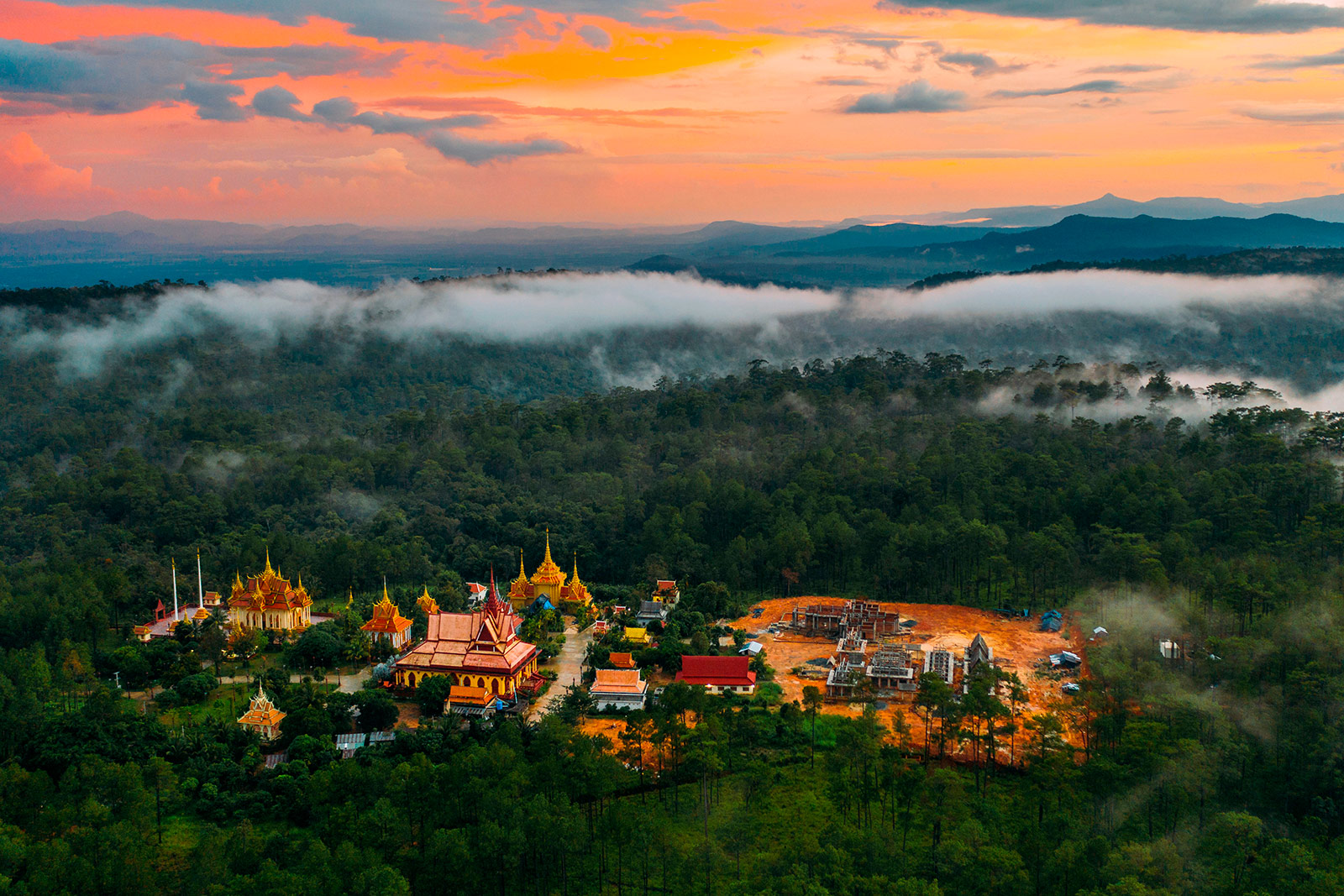
If you’re looking to explore Cambodia beyond the well-trodden tourist spots, here are 7 unique and alternative destinations that will take you off the beaten track:
- Kampong Cham: A small city on the Mekong River, Kampong Cham offers a peaceful pace, morning markets, charming shophouses, and the nearby Banteay Prei Nokor temple.
- Banteay Chhmar: An amazing Angkor alternative, this temple complex features intricate carvings and a rich history.
- Kirirom National Park: Located near Phnom Penh, it’s a Cardamom Mountains retreat with lush landscapes and hiking trails.
- Kratie: Known for dolphin watching and Mekong River sunsets, Kratie is a serene riverside town.
- Kampong Thom: Explore pre-Angkorian temples and soak up small-town vibes in this lesser-visited area.
- Tatai Leu & Koh Kong: A fast-changing corner of Cambodia, it’s perfect for eco-tourism and adventure.
- Battambang: Cambodia’s artistic capital, with colonial architecture, bamboo trains, and a vibrant arts scene.
Cambodia is a land of wonder, where ancient history meets natural beauty. From exploring the awe-inspiring Angkor Wat to relaxing on the beaches of Sihanoukville, this country offers an unforgettable experience. To get the most value for your money, consider a package tour to Cambodia and Southeast Asia. Contact a local tour operator like Asia Travel and Leisure to plan your perfect trip. With over 19 years of experience and a team of 50 travel experts, Asia Travel and Leisure offers tailored tours across Southeast Asia, ensuring you experience the best of the region. Their local offices in Vietnam, Laos, Cambodia, Myanmar, and Thailand provide on-ground support and expertise, making your journey seamless and memorable.




